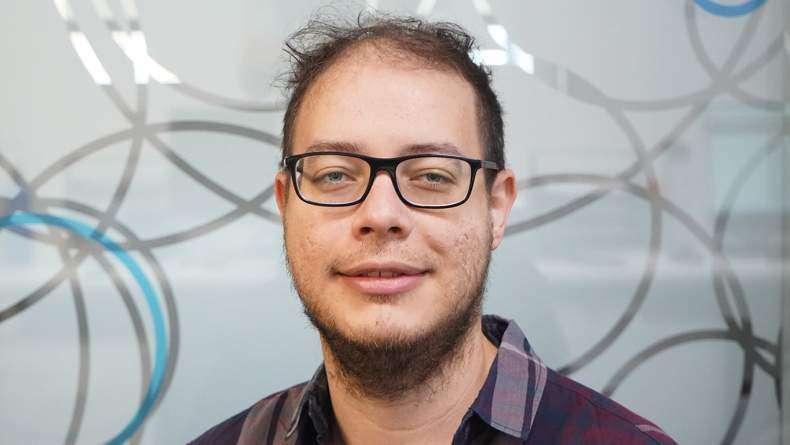BCMaterials Fortnightly Seminars #21

“New synthesis methods and coating techniques for the enhancement of electrochemical behaviour of Na3V2O2(PO4)2F compound”
Paula Serras
(BCMaterials)
Sodium vanadium fluorophosphates have recently shown very good electrochemical performance vs. Na/Na+ providing high working voltages (3.6 and 4 V vs. Na/Na+) and good specific capacity values near to theoretical ones (130 mAh/g). The vanadyl (IV) Na3V2O2(PO4)2F compound which belongs to the Na3V2O2x(PO4)2F3-2x family of compounds can be successfully synthesized by a novel single-step hydrothermal method. However the absence of in-situ carbon in the final product makes necessary to employ an ex-situ carbon coating impregnation method usually using sucrose. Hydrothermal Carbonization (HTC) process is a widely used method for the synthesis of functional carbonaceous materials from biomass, so it can be an alternative way to get a carbonaceous coating during the hydrothermal synthesis of the fluorophosphates. The biomass usually used for this process includes crude plant materials like agricultural residues, wood and herbaceous energy crops, and carbohydrates like sugars, starch, or cellulose. Moreover, organic electroactive materials derived from biomass are promising candidates for the next generation of rechargeable batteries, due to the low cost, sustainablity and environmental benefits. However their application for electrodic materials in batteries is still a field under development. On the other hand, microwave assisted process has been also employed in order to reduce not only the reaction time and the energy used to synthesize this compound but also to decrease the particle size of the material in order to improve the electrochemical behaviour of the phase. Finally, the use of a polymeric coating has been analyzed in order to avoid the addition of extra carbon and binder by the use of PEDOT/PSS as electroactive polymer. Three different processes have been proposed: electropolymerization in the presence of the fluorophosphates, the fabrication of electrodes by using PEDOT/PSS as binder and the coating of prefabricated electrodes with PEDOT/PSS.
Obtained samples have been characterized by X-ray diffraction, elemental analysis, transmission and scanning electron microscopy. The vanadium oxidation state of the compounds has been estimated by analyzing electron paramagnetic resonance spectra. Electrochemical evaluation of the sodium vanadium fluorophosphates has been made on laminate cathodes in Swagelok cell vs. a metallic sodium anode.
“Coercivity enhancement of nanocomposite NdFeB by grain boundary engineering”
Andrés Martín Cid
(Universidad de Cantabria - Master BCMaterials)
This project is focused on the development of high coercivity rare earth-lean/ Dy-free Nd-Fe-B permanent magnets using grain boundary engineering and the analysis of their microstructure and magnetic properties. The experiments were performed on the understoichiometric Nd-lean (Nd10Fe84B6) composition and using the low melting point Pr3Co0.75Cu0.25 eutectic alloy as infiltration material.
Different heat treatments were carried out on initial amorphous ribbons to find out an optimal grain size with highest coercivity. The best sample obtained (650 ºC – 1h) was used to diffuse PrCoCu alloy at 600 ºC for several times. After 4 hours of infiltration time the coercivity of modified magnet was increased from 5 kOe up to 24.4 kOe. Microstructure were analysed by X-ray diffraction (XRD). Modified grain boundary of magnet with highest coercivity was observed by scanning transmission electron microscopy (STEM-EELS) and the magnetic properties were analysed by high field - vibrating sample magnetometer (HF-VSM 12T)
Related news
Invited Talk with Barcelona Microelectronics Institute’s researchers (December 3)
On December 3 at 12:00 PM, in the Martina Casiano Auditorium in Leioa, BCMaterials will host senior researchers Antón Guimerà and Xavier Illa from the Barcelona Microelectronics Institute (IMB-CNM,…Invited Talk by Liu Yao on Lithium-Metal Batteries (December 2)
Next Monday, December 2, Liu Yao, professor at the Shanghai Institute of Applied Physics, will give an invited lecture at BCMaterials entitled ‘Li-Metal Batteries: From Liquid to Solid-State’. The…Success of BCMaterials’ Annual Workshop on Critical Materials
The 2025 edition of BCMaterials’ annual workshop gathered nearly one hundred participants on November 19 in Leioa to review the latest advances and discuss critical materials, their applications, and…Eudomar Henríquez, author of the 'GEFES article of the year’
We warmly congratulate our post-doctoral researcher Eudomar Henríquez, for being the author of the 'GEFES article of the year 2024-20025' selected by Division of Condensed Matter Physics (GEFES) of…



